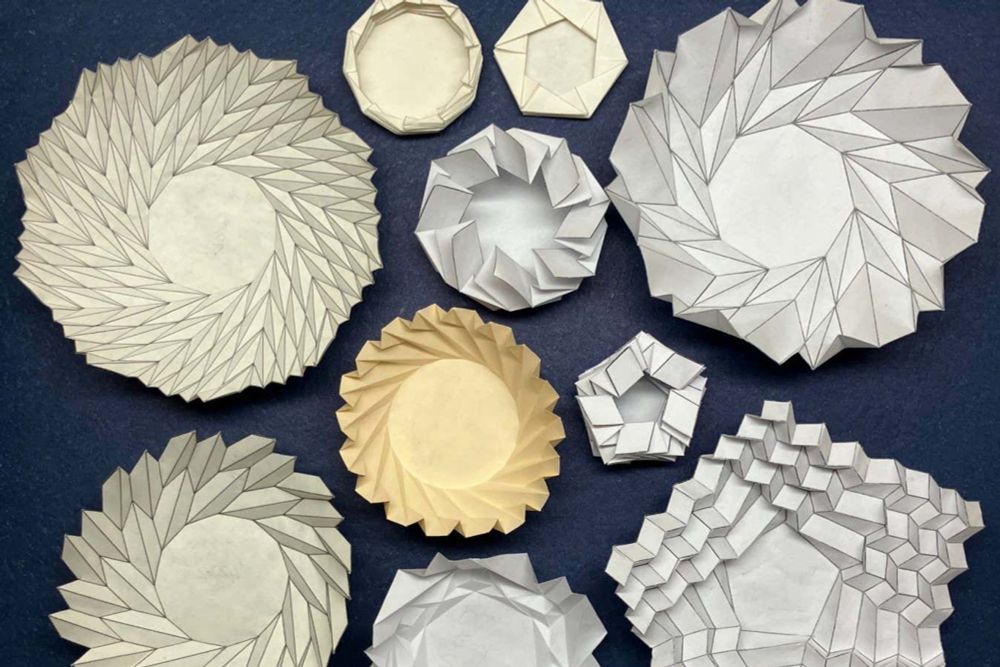Appreciate Quanta for shining a light on our joint work with Simon Gsell, Sham Tlili (@shamtlili.bsky.social), and Matthias Merkel (@merkellab.bsky.social).
11.10.2025 07:04 — 👍 30 🔁 11 💬 2 📌 1
Did you know you can manipulate hundreds of microparticles using phototactic algae?
This is what we show in our last preprint, led by T. Laroussi and J. Bouvard: arxiv.org/abs/2509.08133
🧵👇
09.10.2025 14:38 — 👍 20 🔁 3 💬 1 📌 0
🍀🔬
MSL10 is a high-sensitivity mechanosensor in the tactile sense of the Venus flytrap @natcomms.nature.com from Toyota lab.
www.nature.com/articles/s41...
01.10.2025 14:57 — 👍 23 🔁 7 💬 0 📌 1

Psst, your students want to hang out in Boulder next July. Application deadline is Jan. 15.
www.colorado.edu/conference/b...
07.10.2025 19:57 — 👍 3 🔁 2 💬 0 📌 0

Kirigami-inspired parachute deploying to slow down the delivery of a water bottle from a drone.
Credit: Frédérick Gosselin
A paper in Nature shows that parachute designs inspired by kirigami — the Japanese art of paper cutting to produce 3D designs — are stable and fall close to their target. These findings could simplify parachute manufacturing, reduce costs, and improve accuracy. go.nature.com/473OMmK 🧪
07.10.2025 01:57 — 👍 65 🔁 14 💬 0 📌 3
A ring of cells deforms into a triangular keyhole in just 15 minutes. Meet the hindgut, a model for boundary-driven morphogenesis!
Out now in @pnas.org at doi.org/10.1073/pnas... with @zhaoshh.bsky.social, Alex Jacinto, Eric Wieschaus, Stas Shvartsman, @lepuslapis.bsky.social (1/8)
18.09.2025 20:32 — 👍 68 🔁 22 💬 3 📌 1

New paper on precise tool use learning in carrion crows @currentbiology.bsky.social. We show that—like New Caledonian crows—expert carrion crows pay close attention to the working end of their tool, suggesting tool integration into their peripersonal space. 🧵 & vids! 👇
www.cell.com/current-biol...
11.09.2025 10:14 — 👍 181 🔁 67 💬 2 📌 7

New #preprint: "Control of lumen morphology by lateral and basal cell surfaces", a great #biophysics collaboration with Chandraniva Guha Ray, @markusmukenhirn.bsky.social, Alf Honigmann @biotec-tud.bsky.social @poldresden.bsky.social.
arxiv.org/abs/2509.04316
@mpipks.bsky.social @mpi-cbg.de
05.09.2025 08:59 — 👍 29 🔁 10 💬 1 📌 2

Mechanical forces drive evolutionary change
A small tissue fold present in fruit fly embryos buffers mechanical stresses and may have evolved in response to mechanical forces.
Dresden researchers @paveltomancak.bsky.social @bruvellu.bsky.social, Carl Modes, @cuencam15.bsky.social & colleagues published in @nature.com that a tissue fold in fruit fly embryos buffers mechanical stresses & may have evolved in response to mechanical forces. www.mpi-cbg.de/news-outreac...
03.09.2025 15:26 — 👍 81 🔁 30 💬 3 📌 3

Programmed seasonal brain shrinkage in the common shrew via water loss without cell death
Brain plasticity, the brain’s inherent ability to adapt its structure and function, is crucial for responding to environmental challenges but is usual…
The secret to shrew brain shrinkage? 🤔
Not cell loss, but water loss!
Our new paper shows that brain cells shrink by losing water, a wild feat of brain plasticity 🤯
Check the paper!
www.sciencedirect.com/science/arti...
@mpi-animalbehav.bsky.social @labdavalos.bsky.social @batichica.bsky.social
01.09.2025 20:06 — 👍 41 🔁 15 💬 0 📌 0
New preprint! 🚨 We uncover a slow adaptation to stretch that links star-bundling of keratin filaments with nuclear escape from its keratin cage. Led by @tomgolde.bsky.social 🙌
@IBECBarcelona
www.biorxiv.org/content/10.1...
01.09.2025 15:31 — 👍 88 🔁 28 💬 3 📌 2

We learned a lot about plant cell wall mechanics by stretching the Arabidopsis epidermis. Now published in
@natcomms.nature.com Fibrous network nature of plant cell walls enables tunable mechanics for development
doi.org/10.1038/s414...
28.08.2025 02:44 — 👍 50 🔁 16 💬 1 📌 0

Honeybees adapt to a range of comb cell sizes by merging, tilting, and layering their construction
Honeybees often need to build their comb under conditions that prevent a regular hexagonal lattice. This study uses 3D printed panels and X-ray microscopy to explore their adaptive process when differ...
How do #honeybees adapt their comb-building to different spatial constraints? A new study from @oritpeleg.bsky.social &co uses 3D printed panels and X-ray microscopy to reveal the existence of three distinct construction modes, from tilting cells to building complex 3D structures.🧪
plos.io/4n1g6Hs
27.08.2025 09:42 — 👍 22 🔁 4 💬 0 📌 1
What could be more exciting than watching Euplotes scurry around under the microscope? How about adding some raptorial predation by supergiant cannibal cells?
www.biorxiv.org/content/10.1...
Video by Vittorio Boscaro.
1/n
26.08.2025 20:56 — 👍 112 🔁 37 💬 3 📌 11

Close-up of experimental honeycombs built after a challenging 3D printed setup, showing mostly hexagonal cells.
New paper in PLOS Biology: as we raise the difficulty of our 3D printed puzzles, bees keep landing on combs with ever stranger hexagonal order! 🐝
Led by the brilliant Golnar Gharooni Fard, in collaboration with CK Prasanna & FL Jiménez
journals.plos.org/plosbiology/...
26.08.2025 17:51 — 👍 38 🔁 16 💬 2 📌 0

🚰 Fluid inertia limits microporous flow efficiency, out in EPJ Plus this week, with Kaare Jensen @jensen-research.bsky.social rdcu.be/eBV2C 👇
22.08.2025 15:35 — 👍 3 🔁 2 💬 1 📌 0
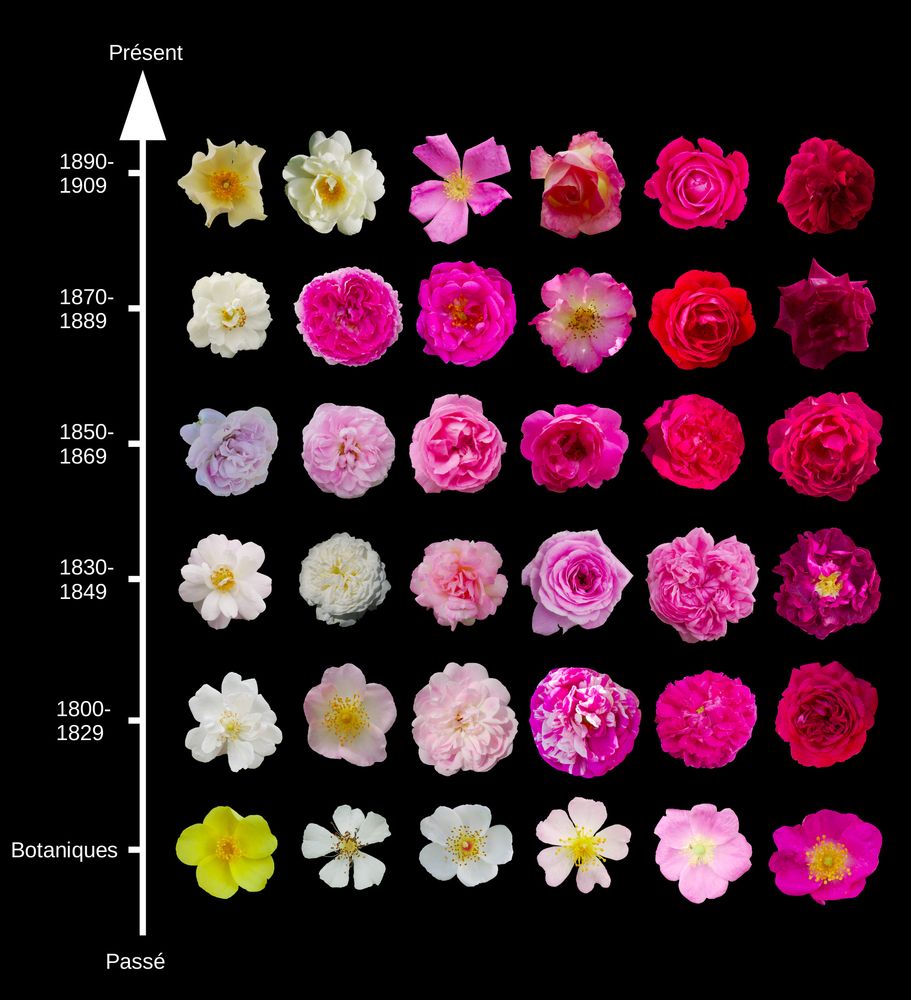

My small contribution to the popularization of evolutionary biology during the #ESEB2025 week, thanks to this article on the evolution of rose breeding in The Conversation France.
If you read French, here it is: theconversation.com/comment-le-c...
If not, our Genetics paper: doi.org/10.1093/gene...
21.08.2025 22:09 — 👍 79 🔁 19 💬 1 📌 0
On the left is a rabbit. On the right is an elephant. But guess what: They’re the *same image*, rotated 90°!
In @currentbiology.bsky.social, @chazfirestone.bsky.social & I show how these images—known as “visual anagrams”—can help solve a longstanding problem in cognitive science. bit.ly/45BVnCZ
19.08.2025 16:32 — 👍 348 🔁 106 💬 19 📌 30
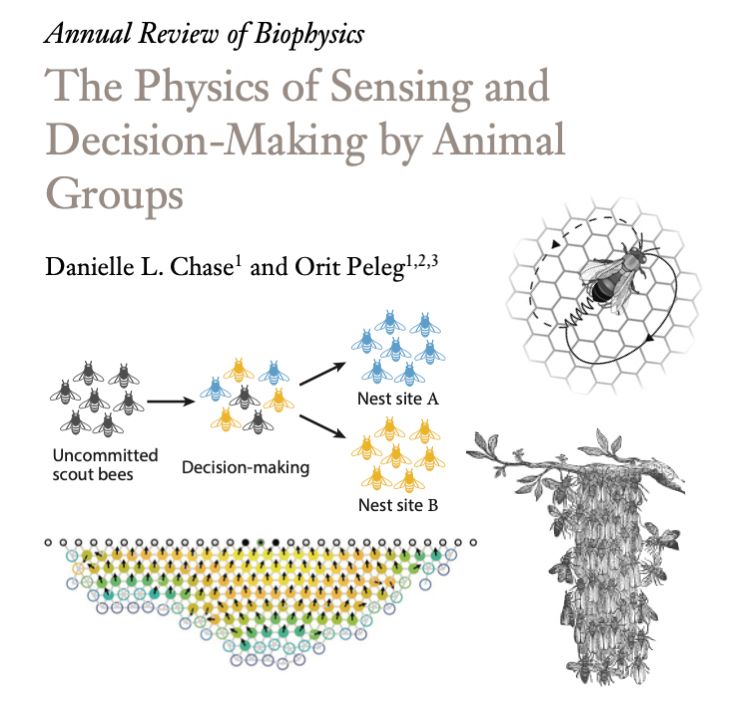
Title page of the review article 'The Physics of Sensing and Decision-Making by Animal Groups' by Danielle L. Chase and Orit Peleg in Annual Review of Biophysics. Includes illustrations of collective behavior in honeybees: a diagram showing uncommitted scout bees transitioning through decision-making to choose between two nest sites; a honeybee on a honeycomb cell; a cluster of bees hanging from a branch; and a schematic of bees forming a layered cluster.
More on collective behavior: Our new Annual Review of Biophysics piece - with the stellar Danielle Chase - explores how animals sense, share information, and make group decisions. In honeybees and beyond 🐝
www.annualreviews.org/content/jour...
09.08.2025 21:16 — 👍 106 🔁 28 💬 1 📌 2
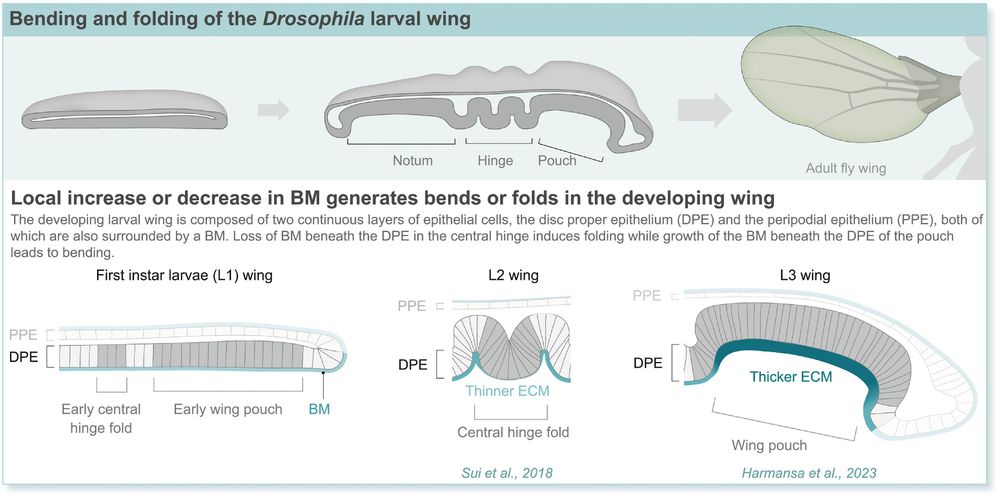
Tissue bending through localized BM growth or dissolution.
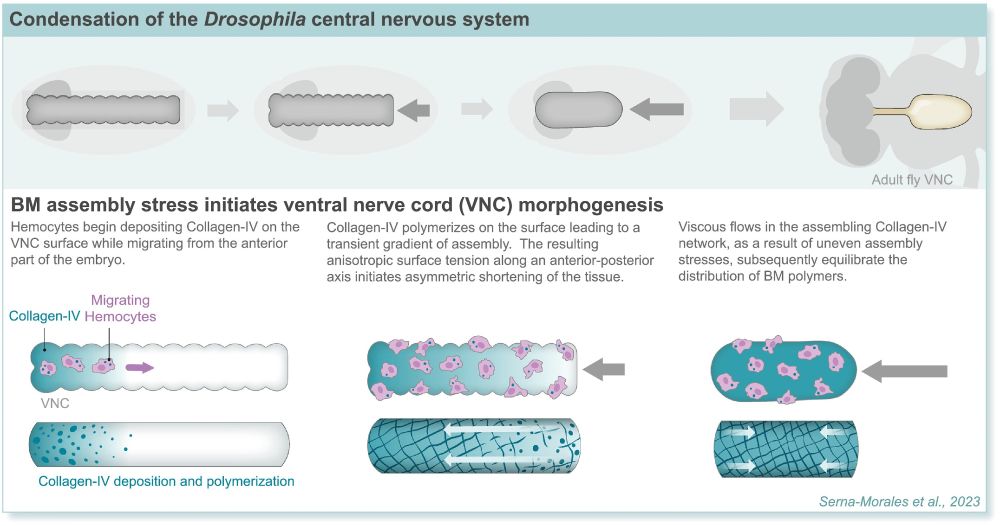
Alteration in tissue morphology by intrinsic stresses in an assembling BM network.
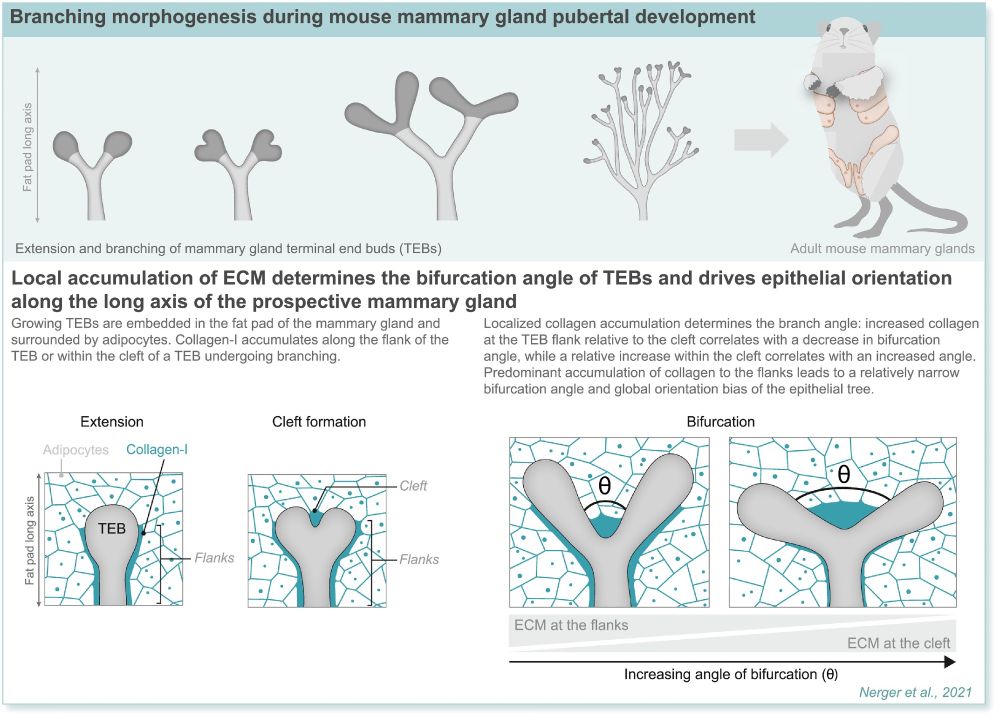
Branching morphogenesis driven by localized deposition of interstitial matrix.
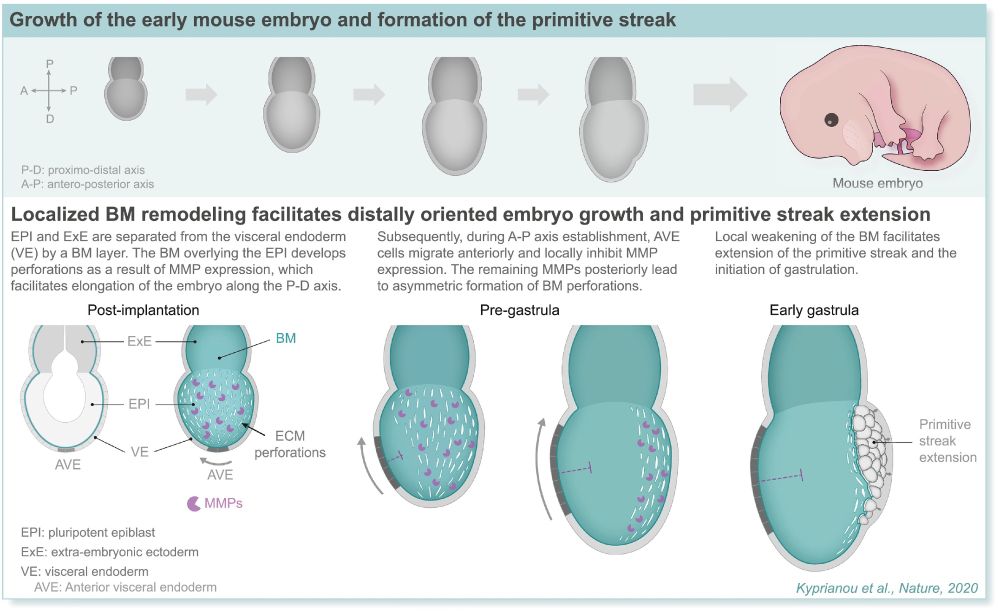
Asymmetric tissue expansion through anisotropic BM remodeling.
Maybe it's time we rethink the idea that development is a cell centric process? In this beautiful review, María-del-Carmen and @stramerlab.bsky.social discussed how the ECM underlies and influences many morphogenesis processes from wing unfolding to mammary gland development.
doi.org/10.1016/j.cd...
08.08.2025 15:05 — 👍 75 🔁 27 💬 1 📌 2
Very happy that the first article from my postdoc work in the Tomancak lab is now published @PNAS! www.pnas.org/doi/10.1073/.... We studied the self-organization of actin in aggregates made from Hydra cells. Thread below (1/9)
06.08.2025 13:09 — 👍 140 🔁 41 💬 3 📌 4
#Activematter research by Marine Le Blay, Joshua Saldi & Alexandre Morin from @unileiden.bsky.social published in @natphys.nature.com ! Read more: edu.nl/btmta. @leidenscience.bsky.social #physics
05.08.2025 12:13 — 👍 4 🔁 4 💬 0 📌 0
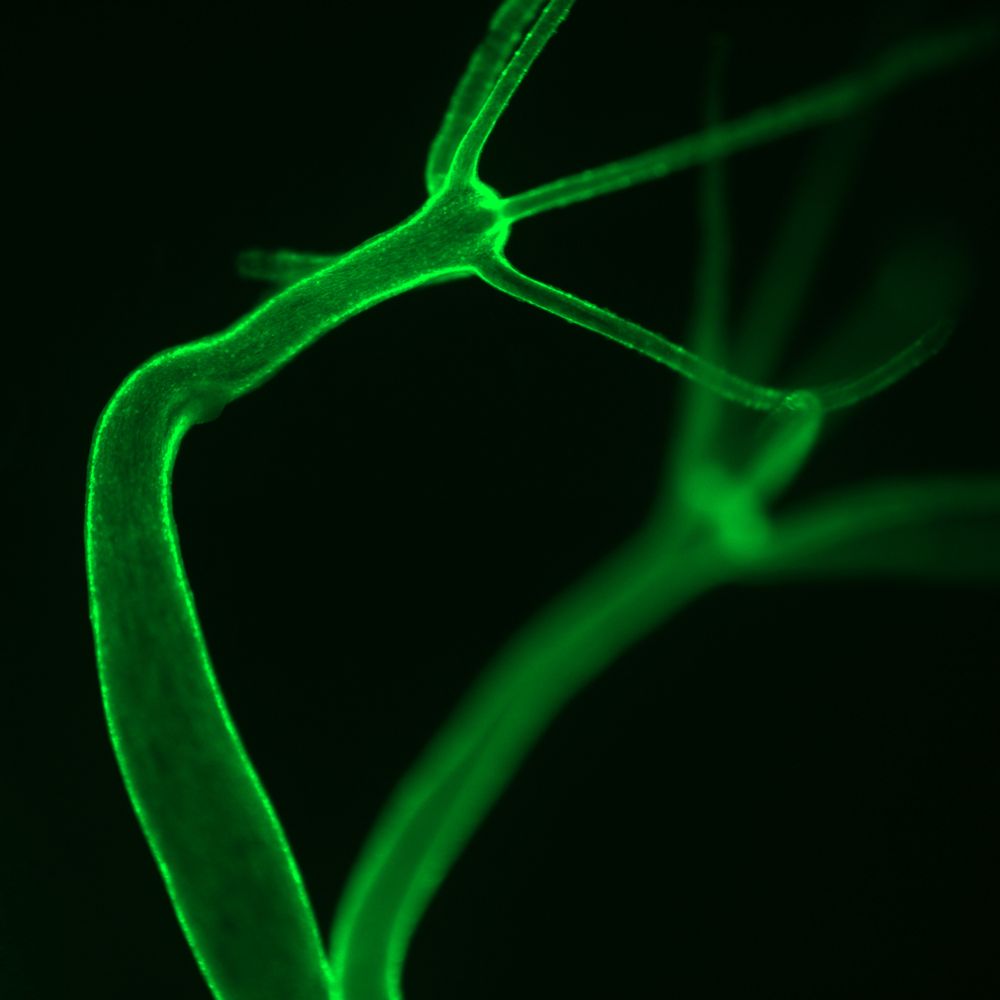
Stretching the immortal Hydra
Dresden researchers show how cells can create a new organism from scratch by coordinating their mechanical properties.
Stretching the immortal Hydra. Publication by @paveltomancak.bsky.social group with Carl Modes @mpi-cbg.de & @zechnerlab.bsky.social shows how cells can create a new organism from scratch by coordinating their mechanical properties. @anaisbailles.bsky.social @pnas.org www.mpi-cbg.de/news-outreac...
05.08.2025 12:45 — 👍 46 🔁 16 💬 1 📌 0
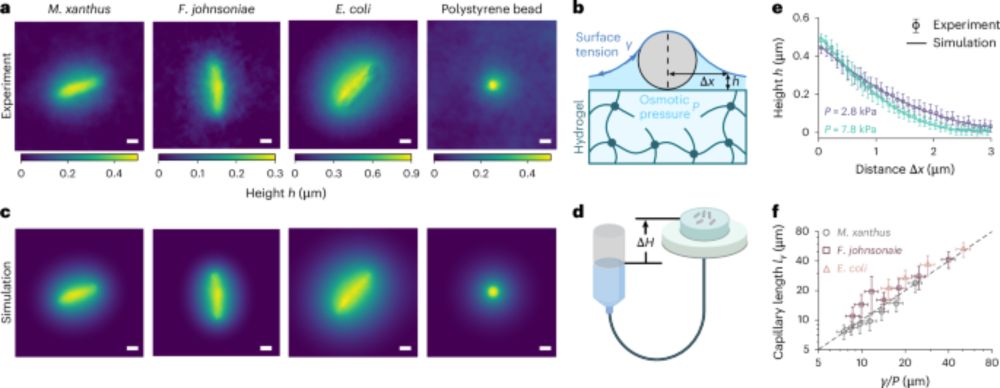
Capillary interactions drive the self-organization of bacterial colonies - Nature Physics
Bacteria tend to live in thin layers of water on surfaces. Now the capillary forces in these layers are shown to help organize the bacteria into dense packs.
Dreaming of a swimming pool? Bacteria are surrounded by water! Water capillary forces organize bacterial colonies into gas, nematic streams, or droplet states. New paper @natphys.nature.com led by Matt Black and Chenyi Fei, with Ned Wingreen and Josh Shaevitz!
www.nature.com/articles/s41...
02.08.2025 14:59 — 👍 56 🔁 13 💬 3 📌 1
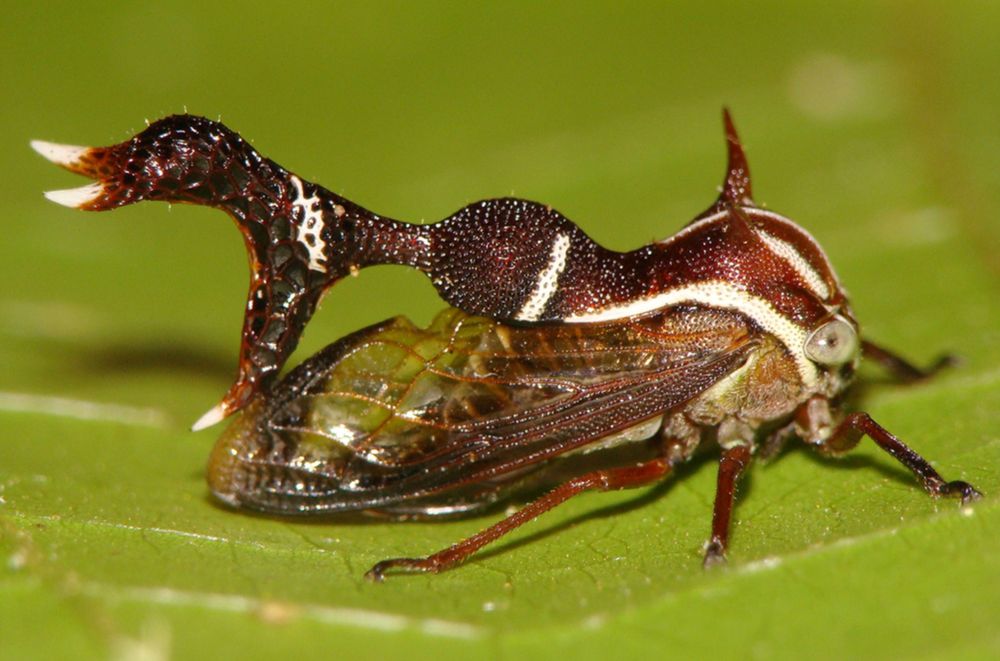
Insect X-Men: Helmets help these odd bugs sense electric fields
Ability may help treehoppers distinguish friend from foe
About 3200 insect species around the world have evolved a structure on their back called a helmet.
But the appendage isn’t just for show: It allows for the detection of electric fields—perhaps helping them distinguish friend from foe. scim.ag/46xid0Y
28.07.2025 15:35 — 👍 79 🔁 21 💬 0 📌 0
Assistant professor of Botany @science.ubc.ca. My lab works on cell division and beyond.
Lab website: https://www.ashraflab.com/
Postdoc, Hughes Lab @ UPenn | PhD, Shvartsman Lab @ Princeton
Robert N. Noyce Assistant Prof. at MIT MechE | Fabricating, testing, and modeling 3D architected materials across length and time scales!
Sn. Assoc. Prof. in Bioengineering, Electronic Plants group leader at LOE-Linköping Uni, Plant Bioelectronics - Biohybrid systems- Living Materials
Research Group Leader at the Institute of Neurobiology, University of Tübingen. Neuroscientist. Studies crows and bird brains.
Group website: felixmoll.com
PhD student in the Fre lab at @institutcurie.bsky.social
Tissue morphogenesis & Fate specification in epithelia.
Organoid and live imaging.
Alumni AgroParisTech & ENS Ulm
Postdoc in Jérôme Gros's team | Former PhD student in Yohanns Bellaïche's team | Multi-scale study of tissue morphogenesis | Live-imaging and quantitative biology
Developmental biology fascinated about the mane (sur)faces/phases of epithelial morphogenesis: from mechanics to evolution.
https://www.bdr.riken.jp/en/research/labs/wang-yc/index.html
Interested in how cells use genes to create shape, form and function in #embryos as well as in Societal Wellbeing
#NotInTheGenes #InNumbersWeTrust #gastruloids #gastrulation
Prof. Shashank Shekhar @EmoryUniversity, Atlanta, USA
Biophysicist interested in Actin dynamics and ciliary flows.
Departments of Physics, Biochemistry and Cell Biology.
Lab website : www.shekharlab.org
🇬🇧🇯🇲 Fellow Uni. of Edinburgh. Theoretical physicist, active and living matter, statistical physics.
Prev: INI Research Fellow Cambridge, UCL, Uni of Lux., Uni of Toronto, London Centre for Nano.
Web: www.drlukekdavis.com
Scientist interested in Ants / Molecular Evolution / Population genomics / Phylogenomics
Understanding and Controlling Soft and Living Materials.
Group led by Prof Eric Dufresne at Cornell University.
Argentinian physicist passionate about dissecting biology with microscopy.
PhD with P. Tomancak at MPI-CBG.
Postdoc with T. Dayton at EMBL-Barcelona.
She/her
biophysics. post-doc @XavierTrepat lab barcelona. currently focused on intermediate filaments and epithelial tissues.
Researcher @
Max Planck Institute of Animal Behaviour
📍Konstanz 🇩🇪
brain 🧠 | behaviour 🎬 | shrews🐭
Unexplainably obsessed with flamingoes 🦩
Like my art? You can support it!
https://ko-fi.com/cecibaldoni
cecibaldoni.github.io 💁🏽♀️🌐
Assistant Professor @Cornell Civil & Environmental Engineering | Scalable MetaStructures Laboratory (SCALE Lab) | scalelab.engineering.cornell.edu | instagram.com/scalelab.cornell
Cell biologist interested in breast cancer, membrane contact sites and lipid transport




















